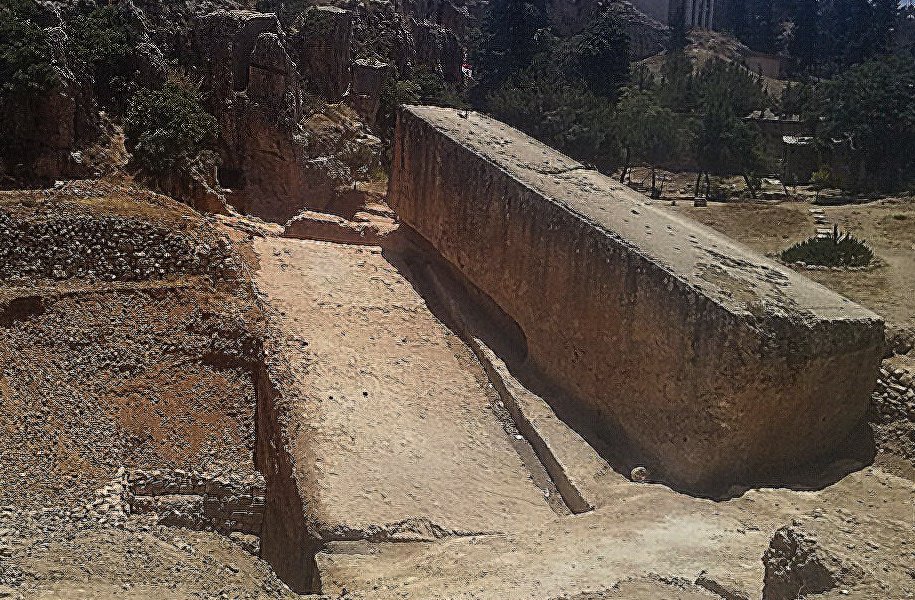A. Sutherland - AncientPages.com - Advanced scientific and engineering skills were involved in construction at Baalbek (Ba‘albek), located in modern Lebanon.
The prehistoric stone platform, on which the Romans built later their temple to the sun, is a remarkable example of these prehistoric skills of the ancients.
These cut stone blocks were once cut and fitted together with unbelievable precision. Image via Stephen Strutt, Out of the Bottomless Pit
The Roman temples were constructed on top of an ancient, unimaginable platform, measuring 5 million square feet. The platform that already existed, when the Romans appeared in the area, was made from some of the largest stones ever used in any building project in human history.
Baalbek has a very obscure past; its origin has never been solved, although the Greeks, Roman, and Phoenicians made several attempts to figure it out.
Baalbeck – Stone of Pregnant Woman in Ruins of Baalbeck, Lebanon via touristtube.com
It is called “The Stone of the South” or (“Stone of the Pregnant Woman”) and together with another ancient stone block in the vicinity, it is among the largest monoliths ever quarried.
See also:
Gigantic Unfinished Stone Structures Cut With Amazing Stone-Working Techniques
It is 20.31 - 20.76 m long, 4 m wide at the base, 4.14 - 5.29 m wide at the top and 4.21 - 4.32 m high.
Legend says the monolith is named after a pregnant woman who pretended that she knew how to move the giant stone if people of Baalbek, only they would feed her until she gave birth. Another version of the legend says that pregnant, supernatural creatures known as “jinn” were involved in cutting and moving the stone.
Second monolith, Baalbek. Image: Wikipedia
A second ancient monolith was discovered in the same quarry in the 1990s. With its weight estimated at 1242 tons, it surpasses even the dimension of the “Stone of the South Woman”. The monolith is 19.5 - 20.5 m long, 4.34 - 4.56 m wide, 4.5 m high, assuming that its shape is consistent in its still-buried (invisible) parts. Based on its size, it is believed that it weighs between 1200 and 1500 tons.
The third monolith in the quarry of Baalbek, the so-called “Stone of Janeen” (in Arabic means baby infant) was discovered by the German-Lebanese team of archeologists in 2014. It is located below the “Stone of the Pregnant Woman” and directly beside of it.
Its weight is believed to be approx. 1650 t, which means it is the largest stone ever carved.
The largest ancient stone block, found in Baalbek/Lebanon, at an altitude of approximately 1,170 meters. Credits: Deutsches Archäologisches Institut
It is 19.6 m long, 6 m wide and more than 5.5 m high, still partly buried in the ground.
Modern builders of the largest structures scattered across the world have not cranes or other lifting technology solutions that can cut, move, lift, and fit the monstrous blocks of the ancient site at Baalbeck.
These cut stone blocks were once cut and fitted together with unbelievable precision.
Their duplication is still impossible even with all available means of the 21st century.
Written by – A. Sutherland - AncientPages.com Senior Staff Writer
Copyright © AncientPages.com All rights reserved. This material may not be published, broadcast, rewritten or redistributed in whole or part without the express written permission of AncientPages.com
Expand for referencesReferences:
B.Foerster, Aftershock: The Ancient Cataclysm That Erased Human History








